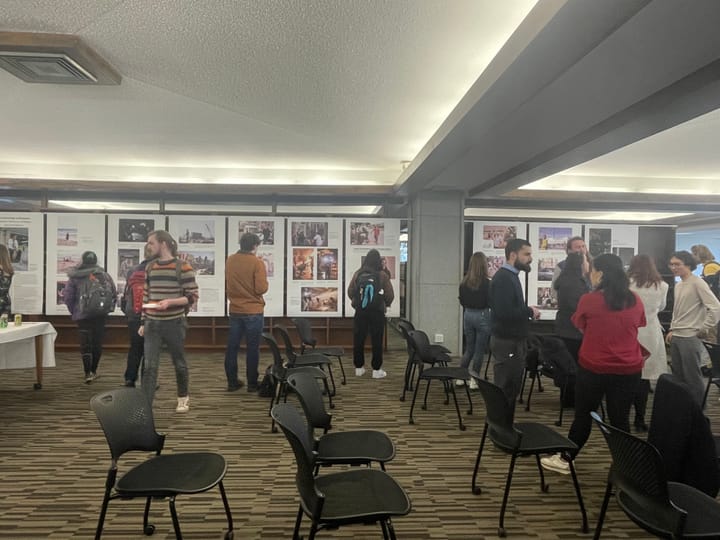ASO Welcomes Class of 2026 and President Elliott
On Oct. 1, the Amherst Symphony Orchestra held its first performance of the semester. Managing Arts and Living Editor Madeline Lawson ’25 recaps the concert, which welcomed the Class of 2026 and President Michael Elliott to Amherst.

The Amherst Symphony Orchestra (ASO) performed their first concert of the year on Saturday, Oct. 1, honoring both the Class of 2026 and the college’s new president, Michael Elliott. It was the first orchestra performance open to the general public since 2020, and the concert hall was packed with excited students and community members. The public had waited two years to see another ASO performance, and the orchestra certainly delivered, impressing the audience with its skill and musicality.
Before the performance started, the orchestra welcomed their newest members from the Class of 2026 onstage with a round of applause. The group then extended a special welcome to Elliott, presenting him with a baton with which to conduct the affairs of the college. Following this, Conductor Mark Swanson entered, and the concert began.
The performance featured a number of mid-century Black composers and showcased the full range of the orchestra. The concert began with William Grant Still’s Symphony #3 (“Sunday”), showcasing the high ranges of the wind and string sections. The performance, a symphony in four movements, oscillated between light, bouncy moments and powerful fanfare, but evoked images of Sunday, guiding the listener through a restful day featuring sunny skies and warm walks.
The ensemble then transitioned to a serene, reflective piece with Florence Price’s string composition, “Andante Moderato.” The orchestra shifted effortlessly to a mysterious section, full of pizzicato plucking and playful tempo changes as the mood returned to serenity.
The violas were emphasized in the piece, and the entire concert, in fact, highlighted instruments that are so often overlooked in orchestral compositions. Still’s Symphony #3 featured the oboe section, and the final piece, an orchestral arrangement of Duke Ellington’s “Black Brown Beige” in three movements, featured the saxophone, clarinet, and trumpet sections, instruments typically found in big band jazz.
Yet, the strings fit in seamlessly, with a rare swing violin part and robust accompaniment to the winds. For me, a highlight of the final piece was the funky trombone wailing, which excited the audience and established the piece as a true jazz composition. The listener couldn’t help but be reminded of the march at the end of Symphony #3, “Day’s End & A New Beginning,” which created a cohesive narrative throughout the concert. The pieces complemented each other and created a natural conclusion to the performance.
The orchestra has three more performances this semester; the next is a tribute to John Williams on Oct. 29, featuring a piece named “Getting Out the Vote.” Swanson noted that, because of the midterm elections this year, he wanted to perform a repertoire of political music. “We’re trying to integrate [a theme of democracy] this semester as well as a broader classical theme, which is third symphonies,” he said.
Swanson also acknowledged the cohesiveness of the orchestral community, especially since Covid policies have been lifted. “[They] didn’t miss a beat in terms of the bonding and the community, which is equally important to the music making that we do,” he said.
Indeed, it’s clear that many of the orchestra’s new first-year members have already fallen in love with the ASO. Charlie Odulio ’26, a trumpet player, emphasized the caliber of music at Amherst and the joys of participating in an all-student ensemble. “It’s nice to be in the orchestra and then to go to Val and see people I know who are in the orchestra,” he said. Winton Garrelts ’26, a violinist, added, “The orchestra is a tight-knit community where it’s about the music, you know?”
Swanson was visibly proud of the orchestra members, ending our interview by saying, “It’s a tremendous honor and pleasure to work with these brilliant students.”





Comments ()